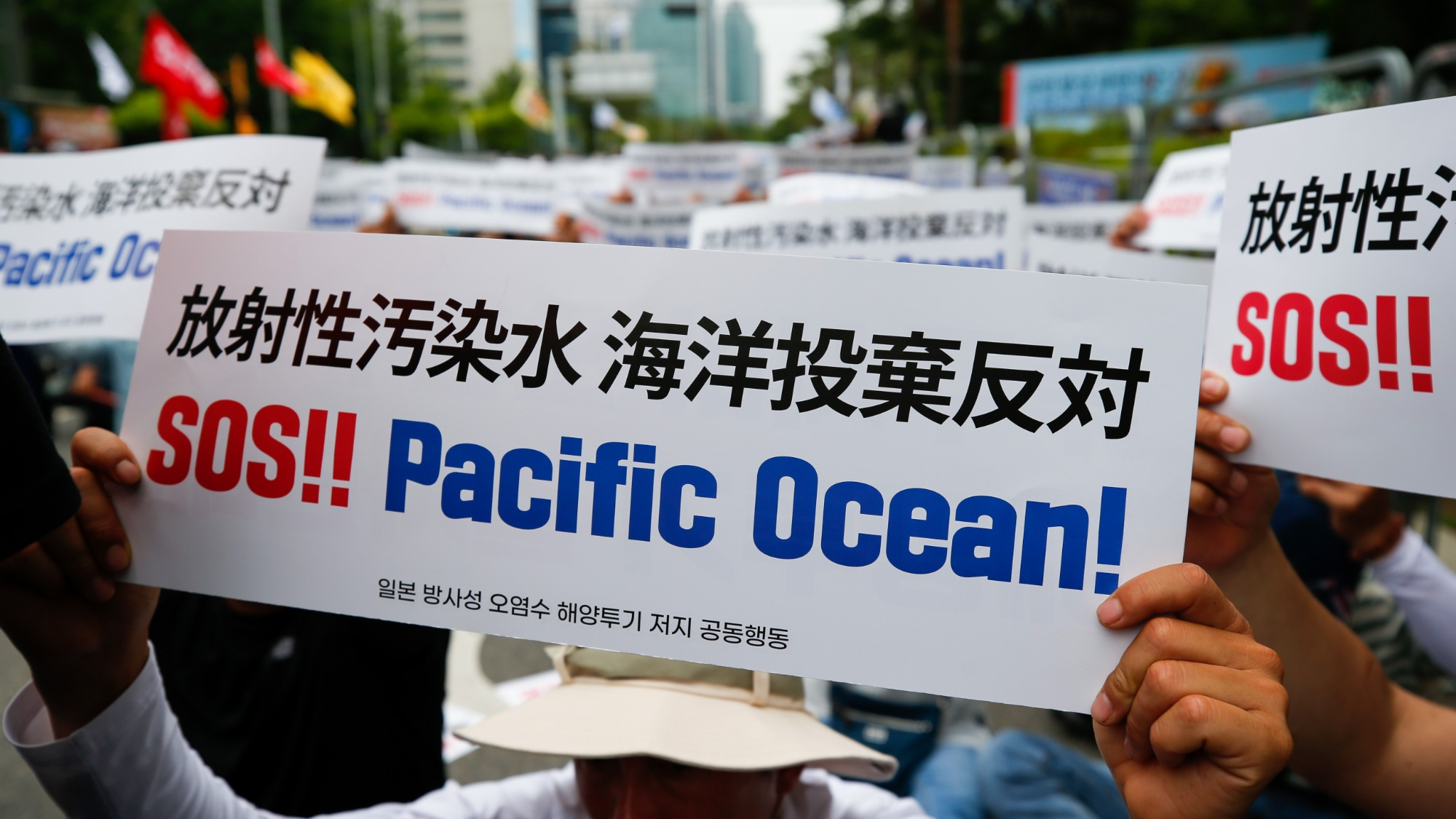

It’s been 12 years since Japan’s catastrophic Fukushima Daiichi nuclear plant disaster, and the country is running out of space to contain the fallout. Over 1 million metric tons of radioactive water is currently housed in massive on-site metal tanks—enough to fill around 500 Olympic sized swimming pools—but authorities need to make room for the naturally occurring groundwaters and rains that will continue to become contaminated.
According to officials, however, treatment processes will render the stored waters safe to be slowly released into the Pacific Ocean over at least the next three decades. Tokyo Electric Power Company (Tepco) is already filtering the water to remove most of its radioactive isotopes. To do this, contaminated water is passed through multiple standalone chambers, each containing various adsorbents to remove specific radioactive isotopes. A hydrogen isotope called tritium, however, cannot be sequestered from water due to a number of factors, including its high boiling temperature. To address this problem, Tepco is diluting the tritium-heavy waters down to levels widely regarded as safe by many governments and international regulatory bodies.
[Related: Fukushima fallout was almost twice as bad as official estimates, new study says.]
The water disbursal plan comes following a 2021 International Atomic Energy Agency (IAEA) assessment of Tepco’s decontamination strategies, which the regulatory body determined to be “consistent with relevant international safety standards.” As The Washington Post notes, the wastewater in question will be diluted to just 1,500 becquerels of tritium per liter of clean water, which is “far below” global standards. Japan’s legal limit is 60,000 becquerels per liter, for example, while the World Health Organization sets their recommended maximum at 10,000.
Supporters of the plan argue that humans are exposed to low levels of tritium everyday via tap water, air, and rain. Meanwhile, other nuclear plants around the world currently release tritiated water into oceans and rivers at even higher levels than what will come from Fukushima. Critics and protesters, however, have voiced concerns for years about the impending water release plans, arguing that more research is needed to assess potential effects of long-term exposure to low doses of tritium.
Local fisheries are also concerned about potential public blowback and reputational damage that may stem from being associated with the nearby treated water release initiative. Residents in nearby China and South Korea also fear potential unforeseen consequences to the decades’ long remediation procedures. Protestors recently took to the streets of Seoul, South Korea to voice their concerns.
Despite lingering concerns, it is undeniable that the current stores of irradiated water have to go somewhere. While there is no perfect solution, the slow-but-sure filtering processes appear to be the best bet at handling what will be a decades’ long cleanup project.
